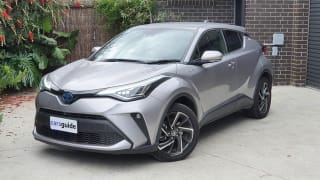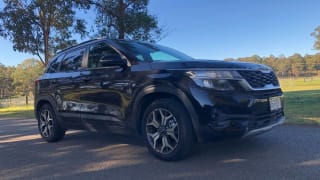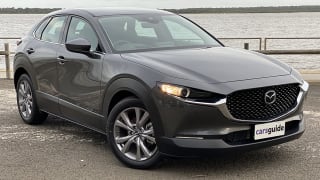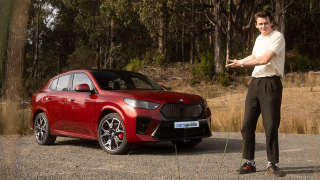Great news if simplicity is your thing.
For Australians, the HR-V offers a one-size-fits-all powertrain proposition – namely a 105kW/172Nm 1.8-litre single overhead cam four-cylinder petrol engine dating back from the early 2000s, driving the front wheels via a CVT auto. No manual gearbox, no turbos and no all-wheel drive (AWD). Variety be damned.
Here’s the thing though. That may work fine for the likeable base VTi at a keen $25,990 before on-road costs, but the VTi-LX as tested kicks off from a heftier $36,240. Which is fine on the dealer forecourt when you’re taking in the leather and sunroof most of its direct rivals either charge extra for or don’t offer at all, but digging deeper unearths some anomalies.
For starters, the Honda costs some $1250 more than the Mazda CX-30 G20 Touring powered by a bigger 114kW/200Nm 2.0-litre engine and just $200 shy of the even gutsier 139kW/252Nm 2.5-litre G25 version. Similarly, it’s $1100 or so ahead of the $35,165 C-HR Koba with an 85kW/185Nm 1.2-litre turbo, $3500 over the most expensive Seltos with front-wheel drive, the 110kW/180Nm 2.0-litre-equipped Sport+, and only $50 under the latter’s 130kW/265Nm 1.6-litre turbo all-wheel drive combo… which of course – along with independent rear suspension – the HR-V cannot match. So, it’s outgunned in the trouser department.
The Honda also shows its age in not offering several technologies others such the $36,660 Hyundai Kona Highlander 2WD include at this price point, like automatic parking, adaptive cruise control, a head-up display, wireless charging pad, cooled front seats, a digital speedo and digital radio. All are AWOL in the Honda.
On the other hand, while the HR-V and Kona both boast a sunroof, you’ll need to spend northwards of $40K for one in the CX-30 (G25 Astina), Seltos (GT-Line) and others.
The VTi-LX also features a reverse camera, front and rear parking sensors, electric mirrors with kerbside dipping (handy for not scratching those attractive wheels), keyless entry/start, one-touch power windows, tyre deflation alert, powered driver’s seat, heated front seats, paddle shifters, dual-zone climate control, Bluetooth phone and audio streaming, a pair of USB-A ports, 17-inch alloys and a space-saver spare.

Additionally, on top of AEB, forward collision warning, high-beam support and lane-departure warning, the HR-V is alone in bringing a left-lane camera (great for spotting cyclists racing up on the inside) as well as the Jazz’s multi-configurable rear-seat arrangement known as Magic Seats.

Nothing else this size offers such astonishing rear-of-cabin space flexibility, though it’s worth noting that – as with all higher-grade small SUVs – larger, more powerful and – leather and sunroof aside – better equipped alternatives in the next segment up can also be had for less – including the Toyota RAV4 GX, Mazda CX-5 Maxx Sport, Subaru Forester 2.5i, Ford Escape FWD and even Honda’s own CR-V VTi X. Along with being roomier, the latter two also bring rousing turbo performance to the table.
Like we said, the HR-V makes a clear case as an entry-level VTi but the waters muddy by the time you’re taking a long hard look at the VTi-LX.





















